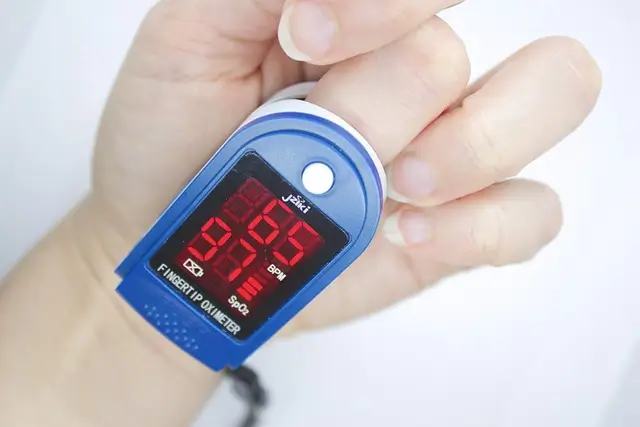What is Pulse Oximeter? How does it work?
Pulse Oximeter is a non-invasive and painless test that measures your oxygen saturation level, or the oxygen levels in your blood. It can rapidly detect even small changes in how efficiently oxygen is being carried to the extremities furthest from the heart, including the legs and the arms.
The Pulse Oximeter is a small, clip-like device that attaches to a body part, like toes or an earlobe. It’s most commonly put on a finger, and it’s often used in a critical care setting like emergency rooms or hospitals. Some doctors, such as Pulmonologists, may use it in office. All pulse oximeter probes (finger or ear) have light emitting diodes (LEDs) which shine two types of red light through the tissue. The sensor on the other side of the tissue picks up the light that is transferred through the tissues.
The oximeter can determine which of the haemoglobin is in pulsatile blood (arterial) and can then determine the SpO_{2} of arterial blood in the peripheral circulation.
पल्स ऑक्सीमीटर क्या है? यह कैसे काम करता है?
पल्स ऑक्सीमीटर एक गैर-आक्रामक और दर्द रहित परीक्षण है जो आपके ऑक्सीजन संतृप्ति स्तर, या आपके रक्त में ऑक्सीजन के स्तर को मापता है। यह तेजी से छोटे बदलावों का भी पता लगा सकता है कि पैर और बाहों सहित हृदय से सबसे दूर के छोर तक ऑक्सीजन कितनी कुशलता से पहुंचाई जा रही है।
पल्स ऑक्सीमीटर एक छोटा, क्लिप जैसा उपकरण है जो शरीर के किसी हिस्से, जैसे पैर की उंगलियों या कान के लोब से जुड़ा होता है। इसे आमतौर पर उंगली पर लगाया जाता है, और इसका उपयोग अक्सर आपातकालीन कक्ष या अस्पतालों जैसी महत्वपूर्ण देखभाल सेटिंग में किया जाता है। कुछ डॉक्टर, जैसे कि पल्मोनोलॉजिस्ट, कार्यालय में इसका उपयोग कर सकते हैं। सभी पल्स ऑक्सीमीटर जांच (उंगली या कान) में प्रकाश उत्सर्जक डायोड (एलईडी) होते हैं जो ऊतक के माध्यम से दो प्रकार की लाल रोशनी चमकाते हैं। ऊतक के दूसरी तरफ का सेंसर उस प्रकाश को पकड़ लेता है
ऊतकों के माध्यम से स्थानांतरित किया गया।
ऑक्सीमीटर यह निर्धारित कर सकता है कि स्पंदनशील रक्त (धमनी) में कौन सा हीमोग्लोबिन है और फिर परिधीय परिसंचरण में धमनी रक्त का SpO_{2} निर्धारित कर सकता है।




